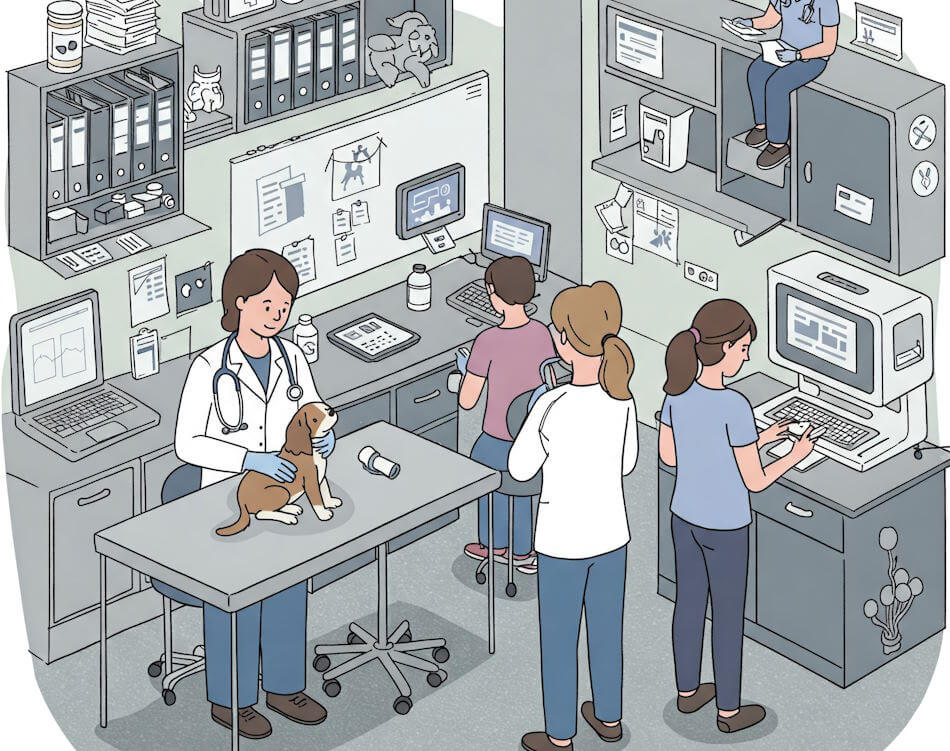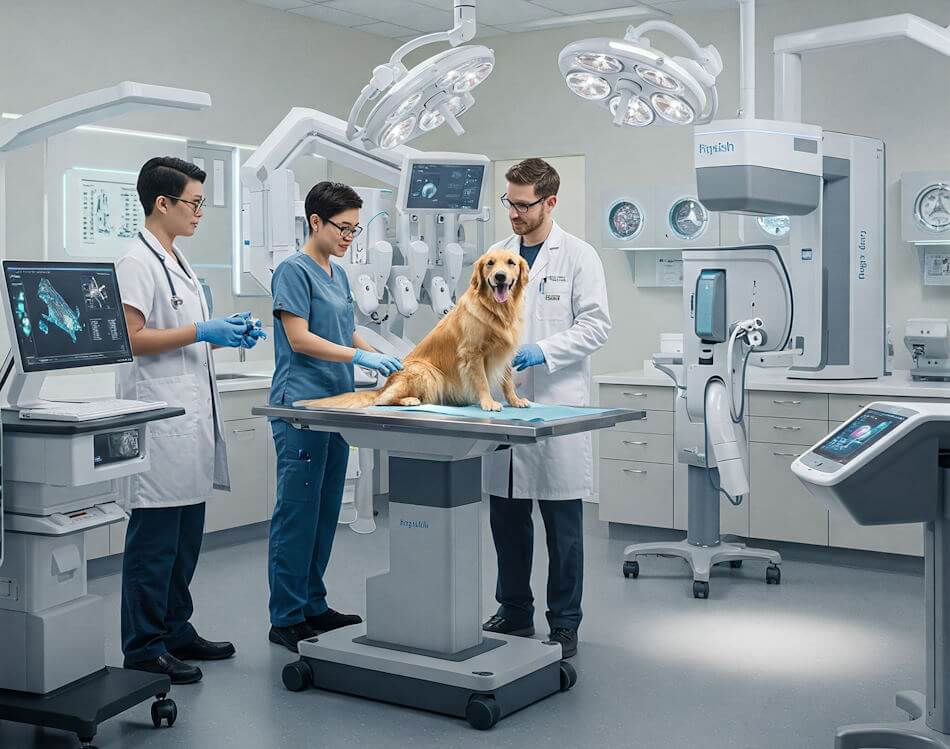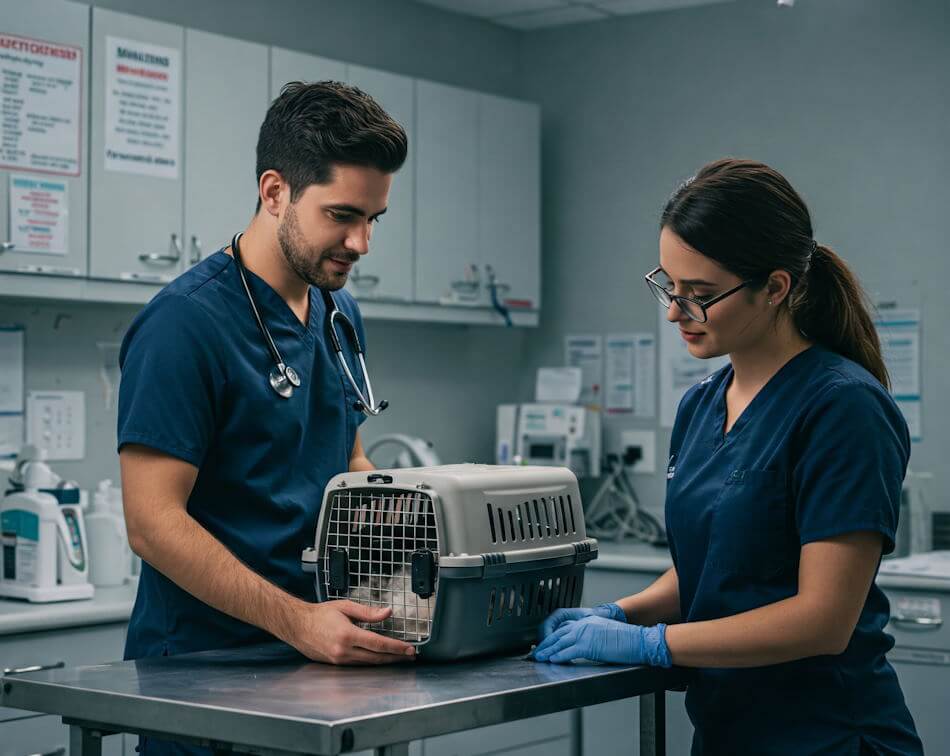Understanding Operational Costs
Operational costs refer to the expenses that a veterinary practice incurs in its daily operations. These costs are essential to maintaining the functionality and profitability of the business. They can be categorized into two main types: fixed costs and variable costs. Understanding these categories is critical for effective financial management within a veterinary practice.
Fixed costs are the expenses that remain constant regardless of the volume of services provided. These include rent, salaries of permanent staff, insurance, and other overhead expenses. For instance, a veterinary clinic will incur fixed costs associated with leasing its premises and ensuring that essential services, such as utilities, are continuously available. These costs are predictable and need to be carefully monitored, as they can significantly affect the overall budget of the practice.
On the other hand, variable costs fluctuate based on the number of patients treated and the services rendered. Examples of variable costs in a veterinary practice include medical supplies, medications, lab tests, and other materials directly tied to patient care. As these costs change with the level of activity in the practice, it is crucial for veterinary professionals to track them closely to maintain profitability.
Understanding operational costs allows veterinary practices to make informed decisions about pricing strategies, staffing, and investments in equipment or technology. With a clear grasp of both fixed and variable costs, veterinarians can identify areas for potential savings and improve their financial management strategies. This knowledge creates a foundation for developing effective operational strategies that can ultimately enhance the sustainability and success of the practice.
Assessing Current Expenses
To effectively reduce operational costs in your veterinary practice, a thorough assessment of current expenses is essential. This assessment begins with a comprehensive review of financial records, which may include profit and loss statements, balance sheets, and cash flow statements. These documents provide a clear snapshot of the practice’s financial health and enable the identification of trends in revenue and expenditure over time. It is vital to gather data for the last few years to get an accurate representation of your financial situation.
Once financial records are compiled, it is crucial to categorize expenses into fixed costs (e.g., rent, salaries, insurance) and variable costs (e.g., medical supplies, utilities). This categorization allows for better visibility into which areas may be excessively draining resources. Next, assess the variable costs in more detail to pinpoint specific areas of high expenditure. For instance, reviewing the costs associated with various suppliers and comparing pricing can highlight significant savings potential. In addition, identifying patterns, such as seasonal fluctuations in certain expenses, can assist in budgeting more effectively.
Furthermore, conducting a benchmarking analysis against industry standards is instrumental in understanding where your practice stands in relation to others. This practice will allow you to identify outliers—areas where expenses are significantly higher than average—which could reveal opportunities for cost-saving measures. Engaging staff to provide insights on daily operations can also uncover less obvious expenses that may be reduced or eliminated without impacting service quality. By continuously monitoring expenses and adjusting strategies accordingly, veterinary practices can create an agile budget that adapts to both operational needs and economic conditions.
Streamlining Staffing Practices
Staffing is often one of the most significant operational costs in a veterinary practice, making it essential for practice owners to optimize their staffing strategies. Effective management of staffing levels can lead to enhanced productivity and reduced expenses. One effective strategy is to evaluate the current staffing requirements against patient volume and service demands. By assessing these factors, practices can adjust their workforce accordingly, ensuring that they maintain adequate staffing during peak times while avoiding overstaffing during quieter periods.
Additionally, improving employee productivity is vital in mitigating operational costs. Implementing performance metrics can help identify areas for improvement among staff members. Regular training and development opportunities can also enhance the skills of the veterinary team, ensuring that each employee is equipped to handle their responsibilities efficiently. This not only fosters a productive work environment but also contributes positively to employee morale.
Another avenue to explore is the effective utilization of part-time staff. By employing part-time workers during peak hours or special events, practices can maintain optimal staffing levels without incurring the costs associated with full-time employees. This flexible staffing approach allows practices to adapt to changing circumstances while minimizing financial strain.
Furthermore, implementing a cross-training system can provide significant advantages. When employees are trained to perform multiple roles within the practice, it creates a more adaptable workforce. This means that staff can cover for one another during absences or busy periods, further enhancing efficiency. Cross-training also contributes to employee satisfaction, as team members gain new skills and a broader understanding of the practice’s operations.
In summary, by strategically streamlining staffing practices, veterinary clinics can significantly reduce operational costs while maintaining high-quality care for their patients. Careful evaluation of staffing needs, improving productivity, and utilizing flexible staffing options are important steps toward achieving this goal.
Implementing Technology Solutions
In the modern veterinary practice, the effective integration of technology is increasingly recognized as a crucial strategy for reducing operational costs. By employing advanced software solutions, practices can enhance their efficiency and optimize resource allocation. Notable areas where technology can be employed include scheduling, billing, and inventory management, significantly impacting overall operational expenditure.
For instance, veterinary management software can streamline appointment scheduling, reducing the time staff spend managing diaries and improving client communication. These systems often come with features that allow clients to book appointments online, which not only enhances client satisfaction but also minimizes the potential for missed appointments. With automated reminders, practices can further decrease cancellations, leading to greater revenue consistency.
Billing processes in veterinary practices can also benefit greatly from technology. Automated invoicing software can facilitate real-time billing, reducing human errors and ensuring prompt payment collection. Furthermore, integrating payment gateways can help streamline the transaction process, allowing clients to pay through various means, which can enhance cash flow and reduce administrative costs associated with accounts receivable.
Additionally, effective inventory management software is vital for controlling costs related to medical supplies and pharmaceuticals. By implementing such systems, veterinary practices can gain real-time insights into inventory levels, track usage patterns, and automate reordering processes. This reduces waste and ensures that essential supplies are always available without overstocking.
The advent of telemedicine further enriches the technological landscape by providing remote consultations, which can lower overhead costs by reducing the need for physical office visits. This approach not only expands the reach of veterinary services but also caters to clients who may have transportation or mobility challenges. Moreover, digital record-keeping enhances data accessibility and accuracy, significantly improving patient care and operational efficiencies.
Managing Inventory Efficiently
Effective inventory management is crucial for reducing operational costs in a veterinary practice. By maintaining an accurate inventory count, practitioners can ensure they have the necessary supplies without incurring excessive expenses associated with overstocking or understocking. The implementation of regular inventory audits is a foundational step in achieving this aim. Such audits allow for the identification of slow-moving products, expired items, and discrepancies between recorded and actual stock levels, ultimately contributing to a more accurate inventory that reflects current needs.
To avoid overstocking, practices should analyze purchase histories and forecast demand based on trends, seasonal variations, and patient needs. This data-driven approach enables veterinary practices to predict inventory requirements more accurately, thereby minimizing surplus stock that ties up cash flow. On the other hand, understocking can disrupt operations and compromise patient care. It is essential to establish safety stock levels for high-demand items to prevent shortages. Creating a balanced inventory that considers both supply and demand will enable practices to operate smoothly while keeping costs under control.
Additionally, negotiation with suppliers can prove advantageous in achieving better pricing and flexible terms. Developing strong relationships with reliable suppliers often allows veterinary practices to access discounts or special offers, which can lower procurement costs. Implementing just-in-time (JIT) inventory systems can also enhance efficiency by ensuring that supplies arrive only when they are needed. This approach helps to maintain lower inventory levels, reduces holding costs, and ensures that resources are utilized effectively.
In conclusion, managing inventory efficiently through regular audits, data analysis, supplier negotiation, and just-in-time practices can significantly contribute to reduced operational costs in veterinary practices. By focusing on these areas, veterinary professionals can ensure they provide optimal care while maintaining financial health.
Energy Efficiency and Facility Management
In the pursuit of reducing operational costs within veterinary practices, energy efficiency and effective facility management represent critical strategies. By implementing various energy-saving measures, veterinary facilities can not only minimize utility bills but also create a more sustainable environment. One primary step is conducting an energy audit to evaluate current energy usage patterns and identify areas for improvement. With this insight, specific changes can be systematically applied.
One of the most impactful initiatives is the installation of energy-efficient appliances and systems. Transitioning to LED lighting, energy-efficient heating and cooling systems, and modern medical equipment can lead to substantial decreases in energy consumption. Additionally, employing smart thermostats allows for better regulation of temperature, ensuring that energy is only consumed when necessary.
Routine maintenance plays a pivotal role in enhancing energy efficiency. Regularly servicing HVAC systems, sealing air leaks, and ensuring that insulation is adequate can prevent energy waste. For example, outdated or poorly functioning equipment may consume more energy to perform the same tasks, leading to inflated utility costs. Scheduling maintenance checks not only preserves equipment lifespan but also optimizes their operational capacity.
Furthermore, optimizing the use of physical space within the facility can significantly contribute to energy savings. Reconfiguring rooms to minimize the distance between commonly used areas can lead to improved workflow and reduced need for heating or cooling larger spaces. Designating energy-intensive rooms, such as surgery suites or treatment areas, to have localized climate control units can also enhance overall efficiency.
By prioritizing energy-efficient practices and sound facility management, veterinary practices can achieve substantial operational cost reductions while fostering an environmentally responsible business model. These strategies create a win-win situation, benefiting both the practice’s financial health and its commitment to sustainability.
Negotiating Supplier Contracts
Negotiating supplier contracts is a crucial strategy that can significantly reduce operational costs in your veterinary practice. In the realm of veterinary medicine, the procurement of medical supplies, pharmaceuticals, and various services often represents a substantial portion of the budget. Thus, implementing effective negotiation techniques is essential to maximize value and ensure sustainable operations.
To begin the negotiation process, it is vital to gather comprehensive information about your suppliers, including their pricing structures, contract terms, and delivery schedules. This knowledge serves as a foundation for establishing a strong negotiating position. Additionally, comparing offers from multiple suppliers allows for informed discussions and helps you identify the most competitive options available. Utilize this research to highlight the benefits your practice brings to suppliers, such as consistent order volumes or promotional support, which can strengthen your bargaining power.
Another effective technique involves leveraging long-term relationships with suppliers. Building rapport can lead to better pricing, favorable payment terms, and priority service. Many suppliers are more inclined to offer significant discounts to clients with whom they have established loyalty. Therefore, consider the potential advantages of longer commitments in exchange for reduced prices or enhanced service offerings.
Moreover, adopting a collaborative approach during negotiations can further increase your chances of securing optimal agreements. Aim to foster a win-win scenario where both parties feel satisfied with the outcomes. This not only leads to cost savings but can also create a deeper sense of trust and cooperation, enhancing future interactions and negotiations.
In conclusion, successful negotiation of supplier contracts is a fundamental aspect of reducing operational costs in a veterinary practice. By employing strategic techniques and prioritizing long-term relationships, veterinary professionals can enhance their financial stability while securing high-quality supplies and services for their patients.
Maximizing Revenue Streams
In the veterinary industry, creating multiple revenue streams is essential for ensuring sustainability and efficiency in practice operations. To maximize revenue, veterinary practices can incorporate various supplementary services beyond the standard medical care, which can effectively reduce operational costs relative to the income generated. One effective strategy is the introduction of wellness plans. These proactive health management programs encourage pet owners to invest in routine care and preventive treatments, thereby creating a steady income stream while promoting better health outcomes for animals.
Another avenue for diversifying revenue is to offer grooming services. By providing grooming in-house, veterinary practices can attract a wider clientele, including those seeking grooming only. This not only creates an additional service for existing clients but can also bring in new customers who may later utilize other veterinary services. Moreover, it allows practices to maximize their facilities and staff time effectively, reducing downtime and enhancing overall productivity.
Enhancing client education is also a vital component in maximizing revenue streams. When pet owners understand the importance and benefits of routine veterinary care as well as ancillary services, they are more likely to return and participate in wellness plans and other offerings. Conducting seminars, providing informative materials, and utilizing social media to disseminate valuable content about pet health can help foster a loyal client base that returns for regular check-ups and services. In addition, fostering strong relationships through education can lead to increased recommendations and referrals, further reducing operational costs by maintaining a steady influx of patients.
By strategically diversifying and maximizing revenue streams through the implementation of these services and educational initiatives, veterinary practices can not only improve financial stability but also enhance the overall client experience, ensuring long-term success.
Monitoring and Evaluating Cost-Reduction Strategies
In the ever-evolving landscape of veterinary practices, continuous monitoring and evaluation of cost-reduction strategies are crucial for sustaining operational efficiency and maintaining financial health. This proactive approach enables practices to identify which strategies yield the most significant impact and which may require adjustments. To achieve effective monitoring, it is essential to establish key performance indicators (KPIs) that align with your practice’s goals.
KPIs serve as measurable values that allow you to assess the effectiveness of implemented cost-reduction strategies. Examples of relevant KPIs in a veterinary practice may include the reduction in supply costs, improvement in staff productivity, or increased client retention rates. By tracking these indicators, practice managers can gain valuable insights into the financial and operational performance of their facility. Regularly reviewing these KPIs is equally important, as it helps to identify trends over time and assess the long-term viability of cost-reduction measures.
Moreover, it is advisable to schedule periodic reviews—such as quarterly or bi-annual assessments—to analyze the effectiveness of various strategies. During these reviews, involve your team to discuss performance data and gather feedback on processes, workflow, or potential barriers that may affect cost management. Engaging staff in the monitoring process fosters a culture of accountability and encourages their investment in operational efficiency.
Additionally, flexibility is key. As market conditions or patient needs change, what worked previously may no longer be effective. Therefore, maintaining a collaborative approach, adjusting your strategies based on performance data and staff input, will enhance your practice’s ability to adapt and thrive. By systematically monitoring and evaluating your cost-reduction strategies, your veterinary practice will be better equipped to optimize financial resources and ensure sustainable growth.





